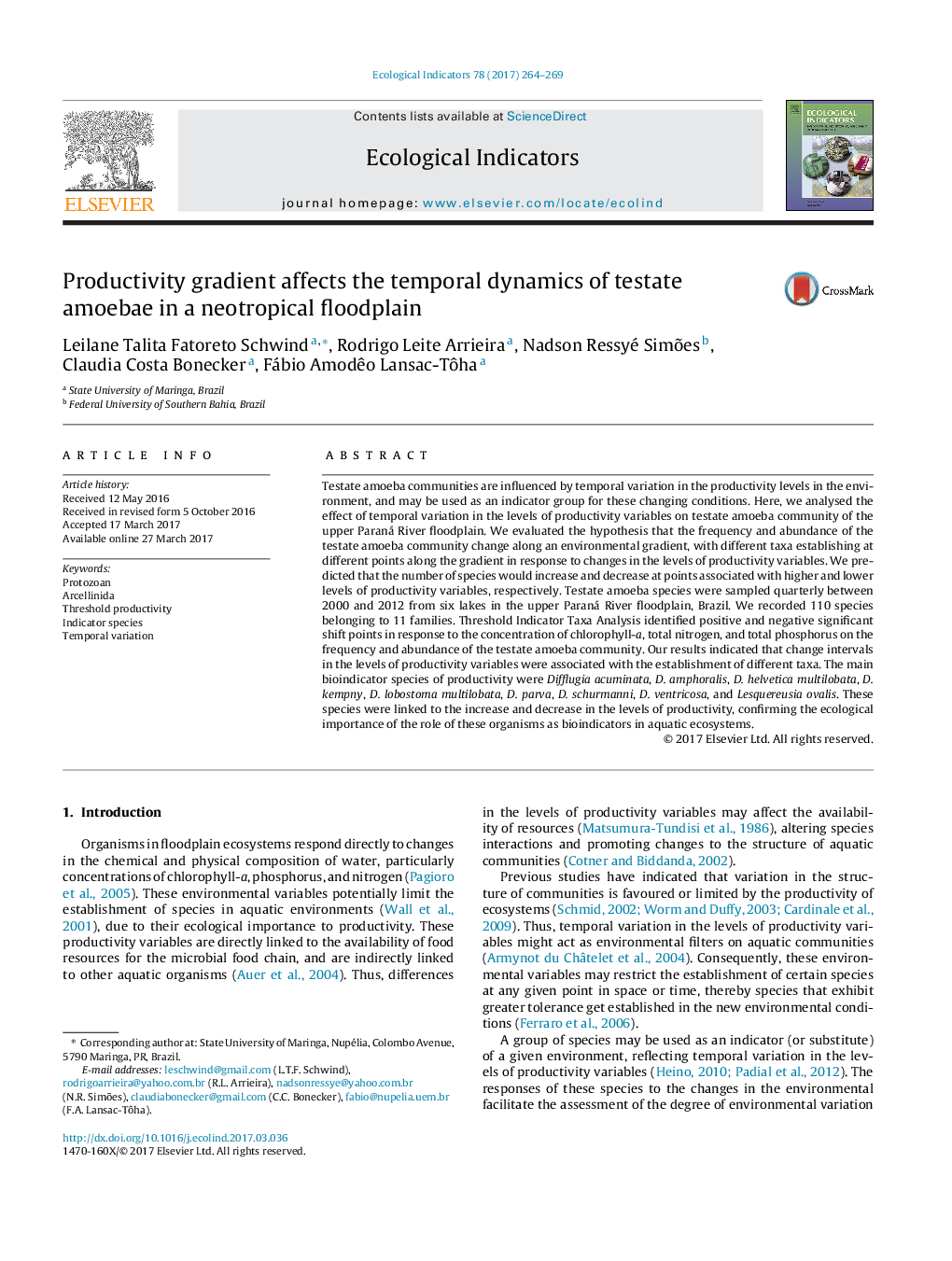| Article ID | Journal | Published Year | Pages | File Type |
|---|---|---|---|---|
| 5741634 | Ecological Indicators | 2017 | 6 Pages |
â¢We analysed how temporal variation in productivity variables affects the frequency and abundance of the testate amoebae community.â¢Threshold Indicator Taxa Analysis identified positive and negative significant shift points in response to the concentration of chlorophyll-a, total nitrogen, and total phosphorus.â¢Change intervals in the levels of productivity variables were associated with the establishment of specific testate amoeba species as bioindicators.
Testate amoeba communities are influenced by temporal variation in the productivity levels in the environment, and may be used as an indicator group for these changing conditions. Here, we analysed the effect of temporal variation in the levels of productivity variables on testate amoeba community of the upper Paraná River floodplain. We evaluated the hypothesis that the frequency and abundance of the testate amoeba community change along an environmental gradient, with different taxa establishing at different points along the gradient in response to changes in the levels of productivity variables. We predicted that the number of species would increase and decrease at points associated with higher and lower levels of productivity variables, respectively. Testate amoeba species were sampled quarterly between 2000 and 2012 from six lakes in the upper Paraná River floodplain, Brazil. We recorded 110 species belonging to 11 families. Threshold Indicator Taxa Analysis identified positive and negative significant shift points in response to the concentration of chlorophyll-a, total nitrogen, and total phosphorus on the frequency and abundance of the testate amoeba community. Our results indicated that change intervals in the levels of productivity variables were associated with the establishment of different taxa. The main bioindicator species of productivity were Difflugia acuminata, D. amphoralis, D. helvetica multilobata, D. kempny, D. lobostoma multilobata, D. parva, D. schurmanni, D. ventricosa, and Lesquereusia ovalis. These species were linked to the increase and decrease in the levels of productivity, confirming the ecological importance of the role of these organisms as bioindicators in aquatic ecosystems.
